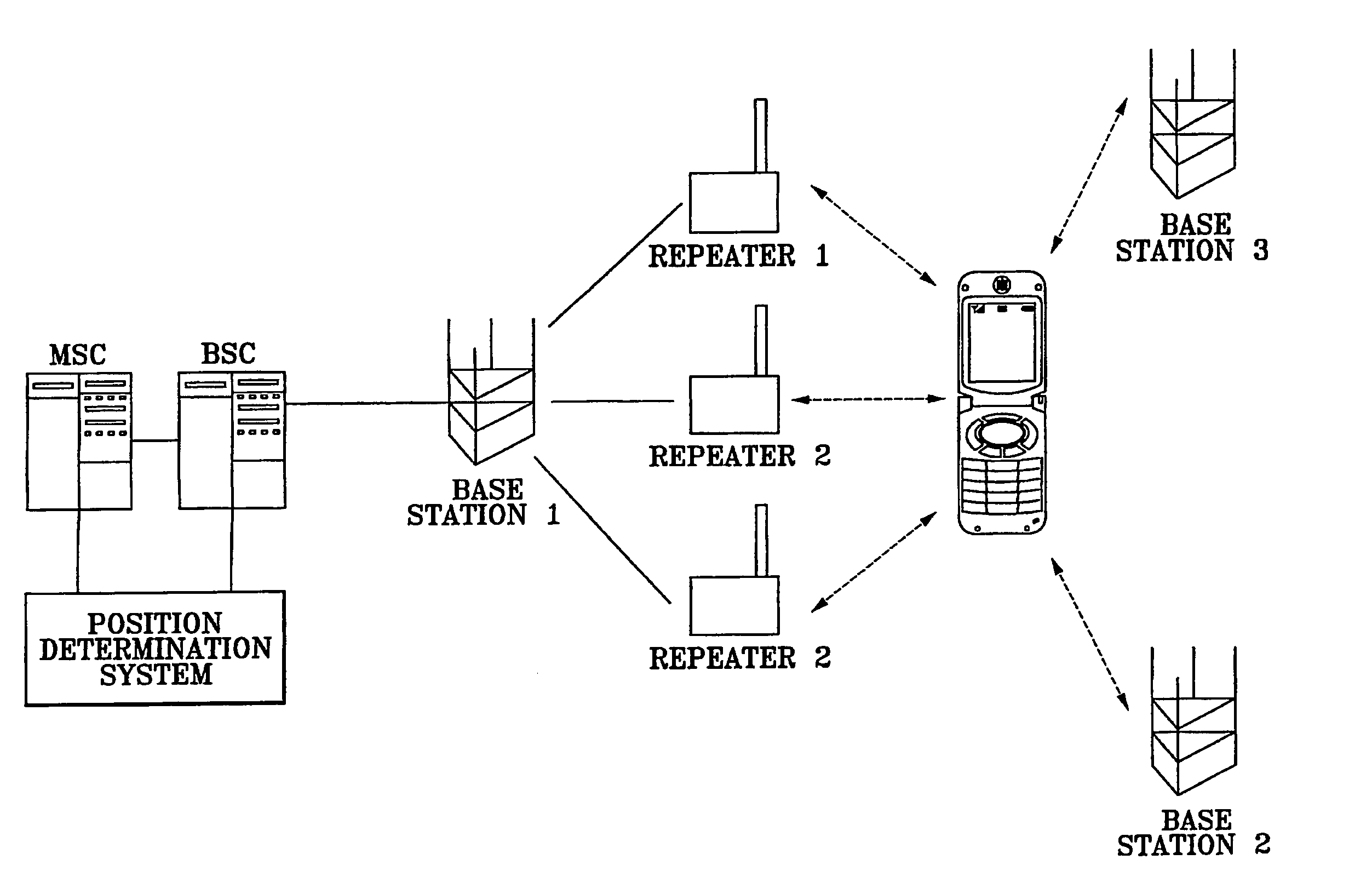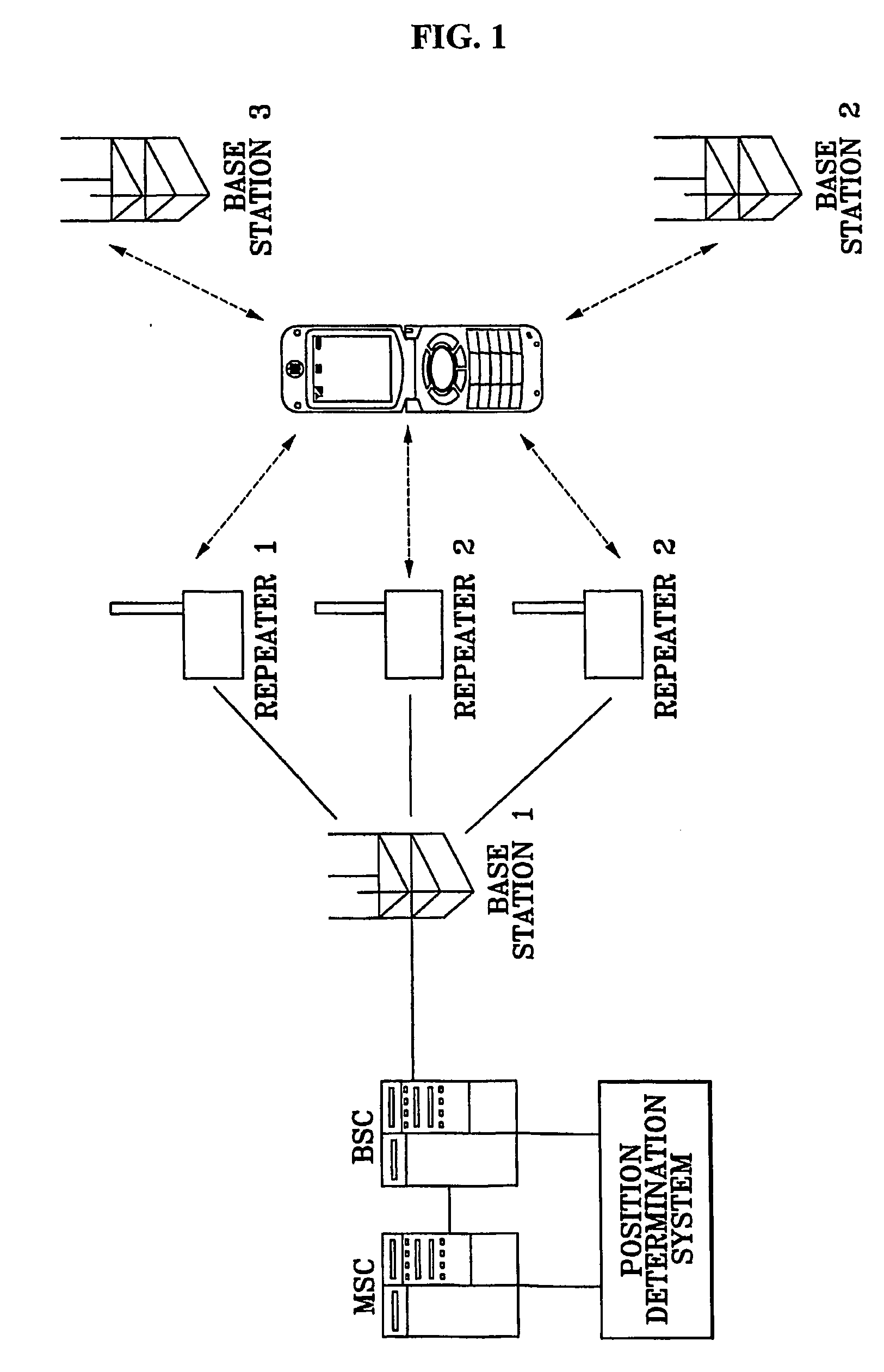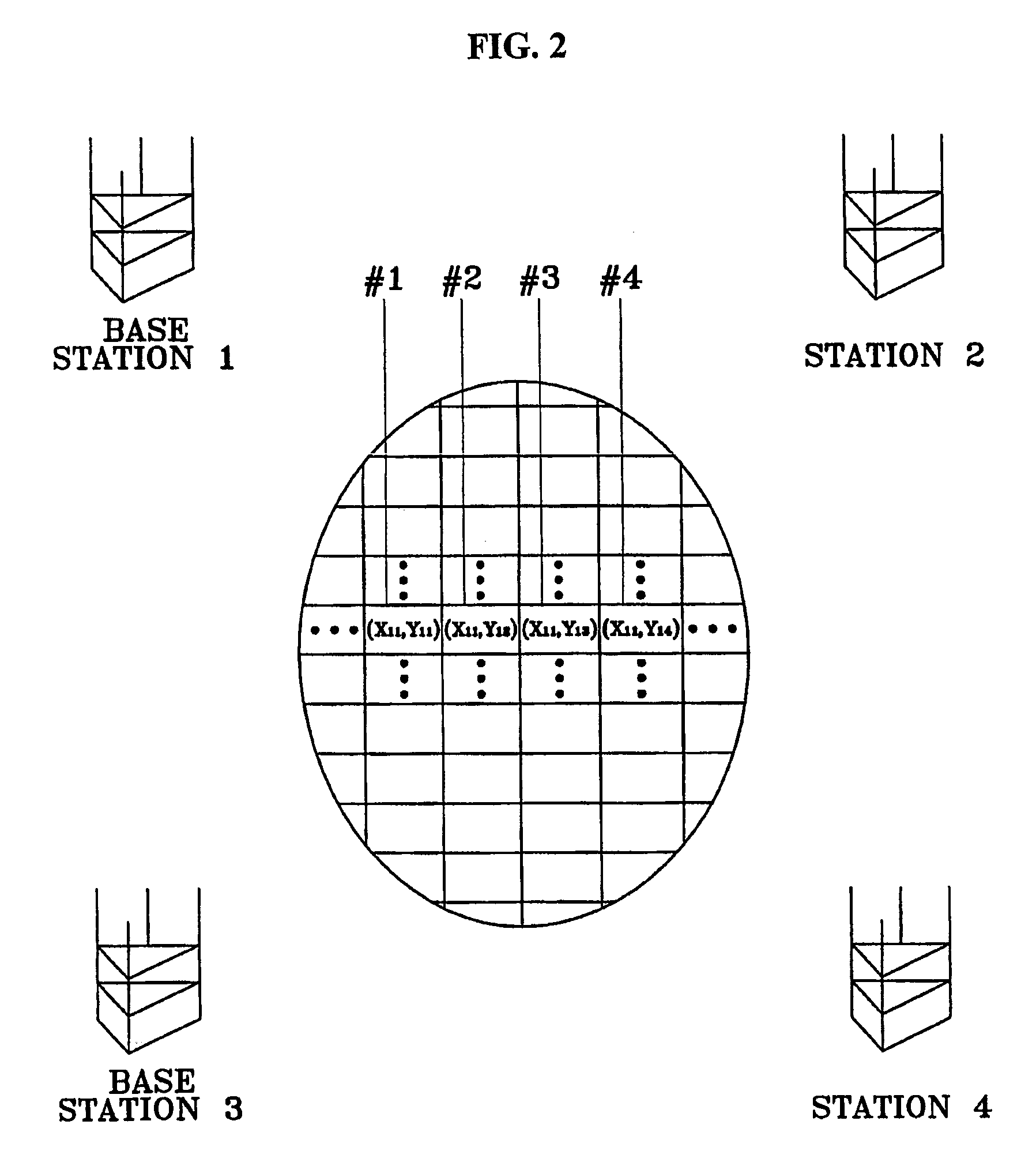System and method for determining position of mobile communication device by grid-based pattern matching algorithm
- Summary
- Abstract
- Description
- Claims
- Application Information
AI Technical Summary
Benefits of technology
Problems solved by technology
Method used
Image
Examples
Embodiment Construction
[0031] Hereinafter, a position determination method and system according to the present invention will be described with reference to the attached drawings.
[0032]FIG. 1 is a diagram illustrating an example of a configuration of a network including a position determination system according to the present invention and a conventional mobile communication network.
[0033] Referring to FIG. 1, a mobile communication network includes a plurality of base stations, and a mobile communication device of a user receives base station signal information from the plurality of the base stations, respectively. The “plurality of the base stations” includes a reference base station with which the mobile communication device is currently communicating with and peripheral base stations. The mobile communication device continuously receives a plurality of pieces of base station signal information from not only a base station in a cell in which the mobile communication device is located but also base st...
PUM
 Login to View More
Login to View More Abstract
Description
Claims
Application Information
 Login to View More
Login to View More - R&D
- Intellectual Property
- Life Sciences
- Materials
- Tech Scout
- Unparalleled Data Quality
- Higher Quality Content
- 60% Fewer Hallucinations
Browse by: Latest US Patents, China's latest patents, Technical Efficacy Thesaurus, Application Domain, Technology Topic, Popular Technical Reports.
© 2025 PatSnap. All rights reserved.Legal|Privacy policy|Modern Slavery Act Transparency Statement|Sitemap|About US| Contact US: help@patsnap.com



